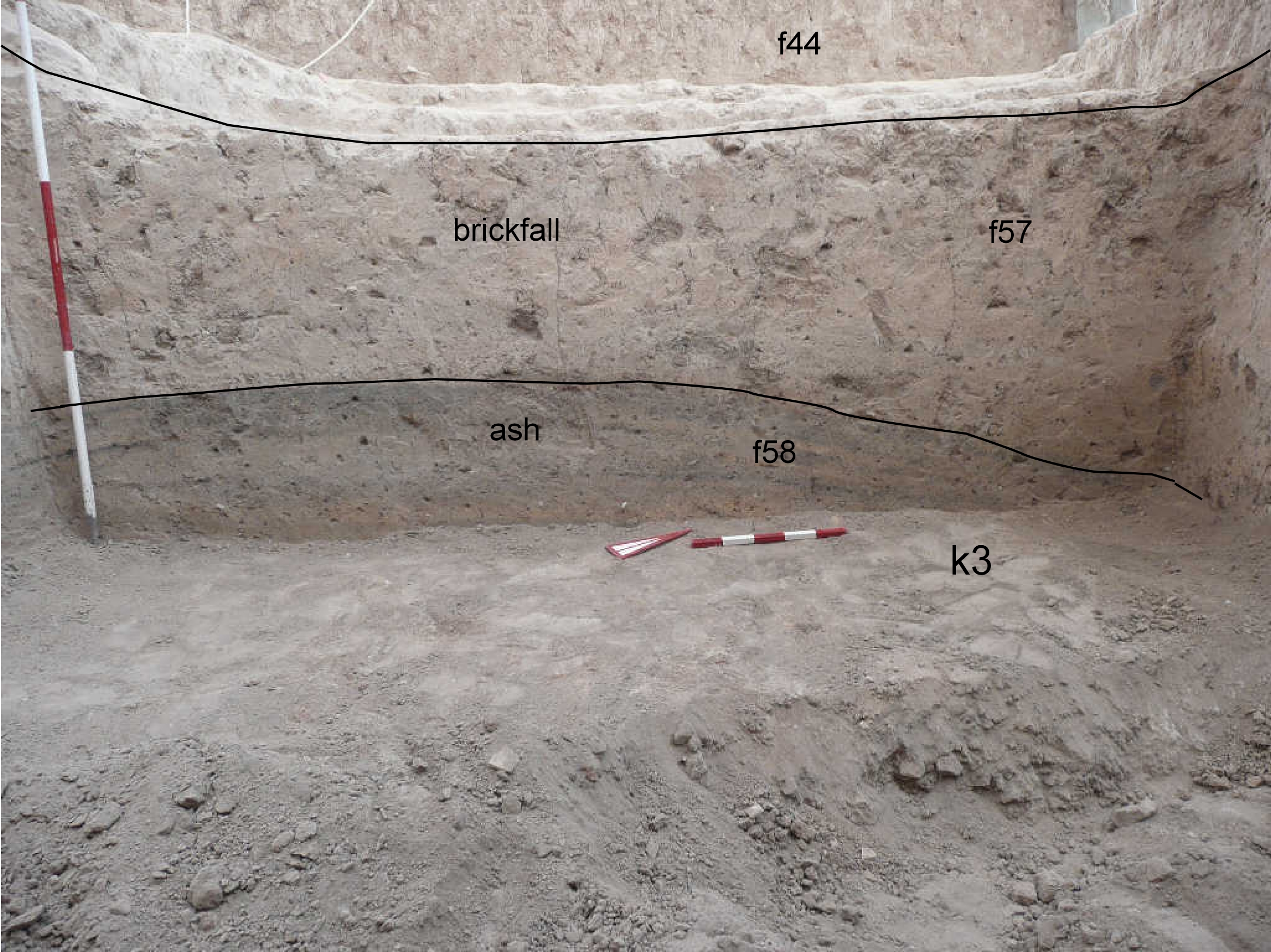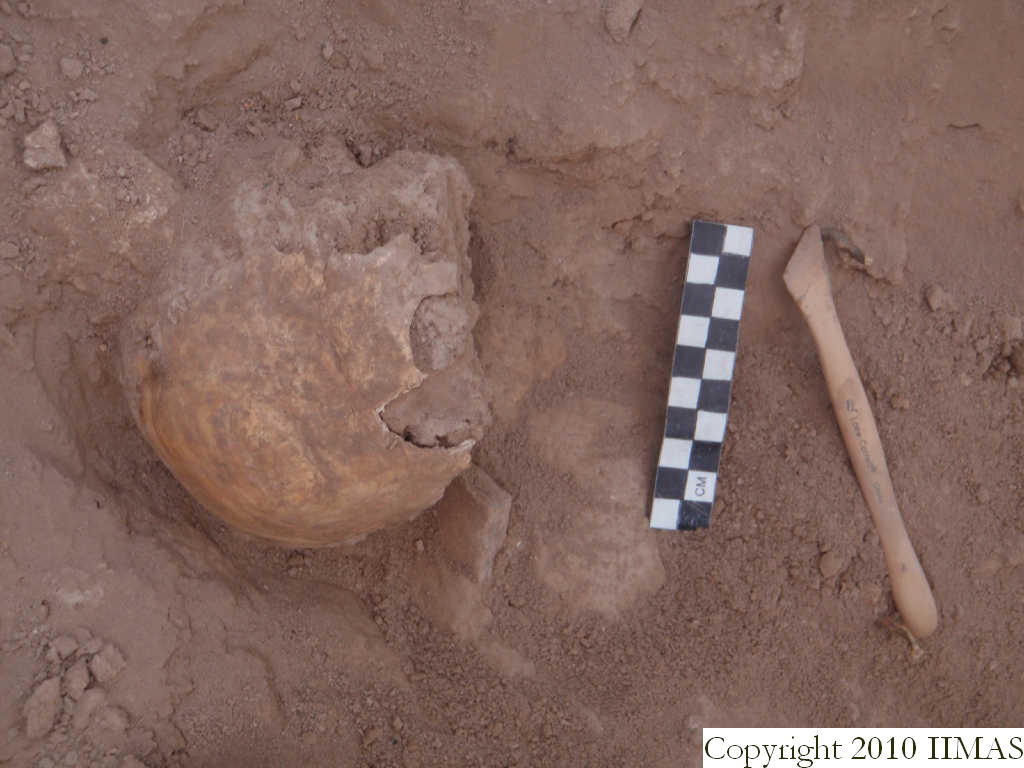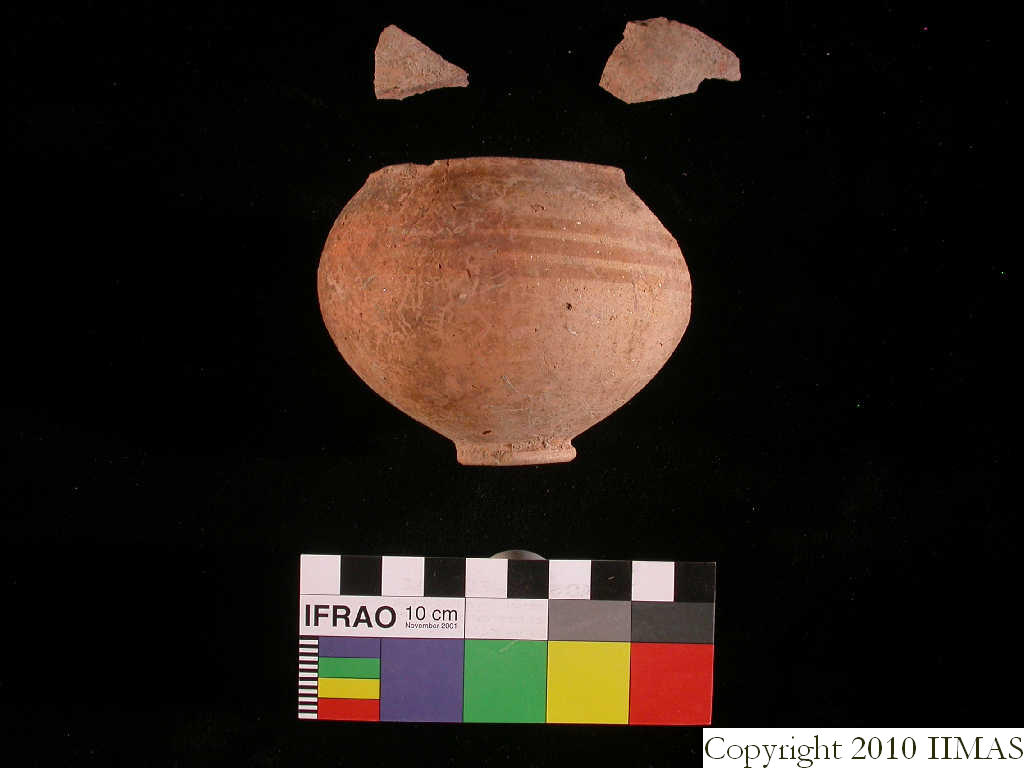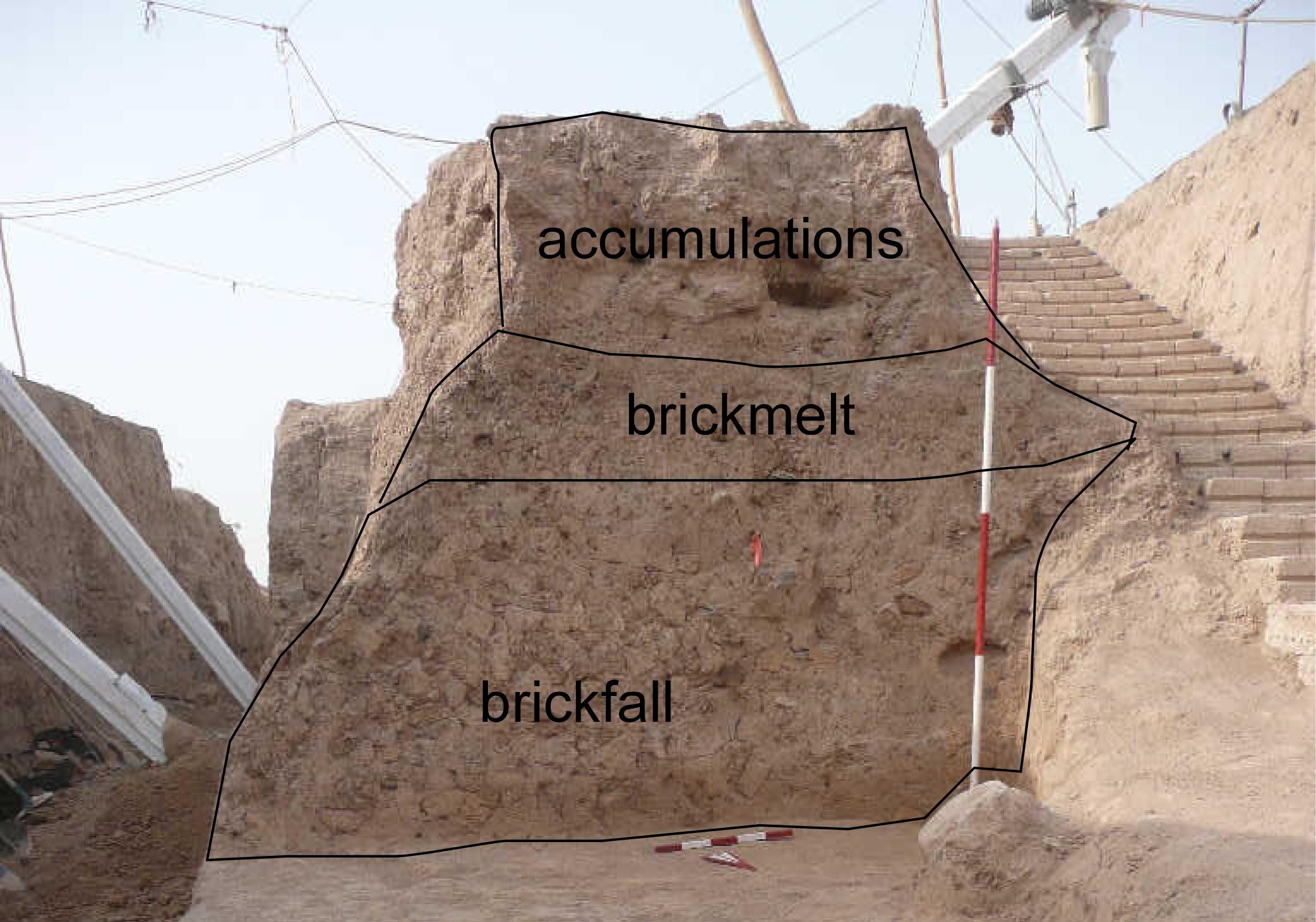Back to top: Depositional history
Introduction
This section discusses the depositional history of J7 as I understand it. The depositional history refers to how events have taken place over time. It is the interpretive counterpart to the emplacement. An overview of the history of J7 is given in the Overview to the J7 digital book. However, the basic sequence of J7 can be understood as follows: firstly an event of destruction with burning occurred leaving an ashy accumulation, followed by a large brickfall and the eventual buildup of accumulations followed by some scattered reuse.

More details about the two basic stratigraphic subdivisions in phases and strata are given elsewhere.
The broader historical picture will be found under Horizons. The division in stages is, in this case, identical with the sequence of phases.
Back to top: Depositional history
Stage 1: Ashy Accumulation - Middle Mittani
The J7 excavations were limited in scope and thus have not reached the third millennium levels, much less the earliest levels. The excavated sequence begins somewhere in the Mitanni period. The ashy accumulation (f58) has only been identified in section and is dated based on comparisons with neighboring J6. The ashy accumulations in J6 (J6f97) immediately precede a large brickfall just as in J7. The brickfall is dated to the Middle Mitanni. The ash may come from the destruction of a large building and have been an immediate precursor to the brickfall. The ash is only seen in the southernmost loci of J7 (k3) and slopes down to the north indicating the ash came from the southeast corner of the Plaza.
|

|
Back to top: Depositional history
Stage 2: Brickfall - Middle Mittani
The brickfall is dated to the Middle Mitanni based on the ceramics and the corresponding stratigraphy in J2 and J6. It is a very expansive brickfall that covers a large area sloping down from the Southeast. The brickfall lies directly on the ash indicating that it happened quickly after the build-up of ash.
The brickfall contains unbaked red and gray bricks mixed with lots of broken pottery including some almost complete small vessels (i1, i2). In addition human bones were found mixed throughout. Three child skulls were identified (i3, i5, i6) indicating that the brickfall may have come from an area with graves.
|

|
 |
Back to top: Depositional history
Stage 3: Abandonment and Build-up - Middle-Late Mittani
|
After the brickfall the area was abandoned and the top of the brickfall eroded and become 'brickmelt' or highly eroded bricks. To me this indicates that the top level of the brickfall was exposed, but not used, for some time. Eventually the area began to fill up with natural accumulations. Directly above the brickfall we did not find any man-made surfaces but rather a buildup of accumulations. |

|
Back to top: Depositional history
Stage 4: Scattered Use - Late Mittani-Modern
After some accumulations had built up on top of the brickfall the area seems to return to use. There are a number of isolated stones along the eastern edge of J7 which may have been part of the reuse of the area in the Late Mitanni when the upper portion of the staircase (J2f132) was in use. It is unclear at this point if the stones were placed purposely or are deposited in the J7 area by natural processes of collapse. There are some small accumulations of sherds and pebbles dated to the same period (f21, f13).
Back to top: Depositional history